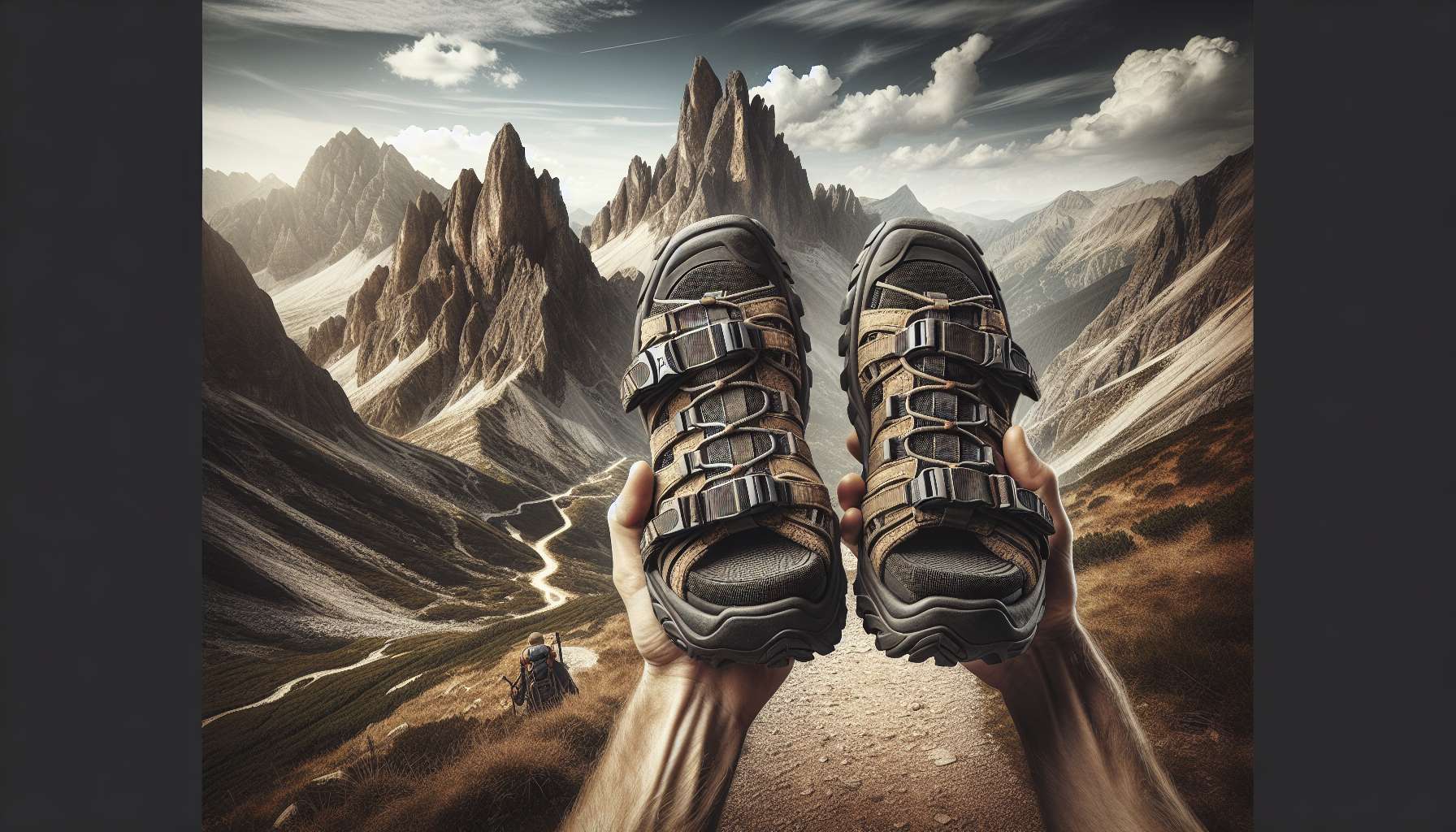Exploring the World of Approach Shoes: The Ultimate Guide
Approach shoes are a versatile and essential piece of footwear for outdoor enthusiasts, hikers, climbers, and adventurers alike. But what exactly are approach shoes, and why are they so popular? In this comprehensive guide, we will delve into the world of approach shoes, exploring their history, design, uses, and benefits. Whether you’re a seasoned outdoor enthusiast or a beginner looking to invest in quality footwear, this article will provide you with all the information you need to know about approach shoes.
The Evolution of Approach Shoes
Approach shoes have come a long way since their inception. Originally designed for climbers to approach the base of a climbing route, these shoes needed to provide both traction on rocky terrain and comfort for long hikes. Over time, approach shoes have evolved to cater to a wider audience, including hikers, mountaineers, and outdoor enthusiasts.
Modern approach shoes combine the technical features of climbing shoes with the comfort and support of hiking footwear. They are designed to provide stability on uneven terrain, grip on rocky surfaces, and protection for your feet during outdoor adventures. With advancements in materials and technology, approach shoes have become an indispensable gear for anyone venturing into the great outdoors.
The Anatomy of Approach Shoes
Approach shoes are distinct from traditional hiking or climbing shoes in their design and construction. They typically feature a sticky rubber sole with a climbing zone at the toe for better grip on rocks and boulders. The midsole is often stiffer than that of a hiking shoe to provide stability on uneven terrain, while the upper is made of durable and breathable materials for comfort and protection.
One of the key features of approach shoes is the lacing system, which allows for a secure and customizable fit. This is essential for climbers who need precise control over their footwear when tackling technical routes. Additionally, approach shoes may have a protective toe cap and a heel loop for easy on and off.
When choosing approach shoes, it’s important to consider the type of terrain you will be encountering, as well as your personal preferences for fit and comfort. Some brands offer waterproof approach shoes for wet conditions, while others focus on breathability and lightweight construction for hot climates.
Uses of Approach Shoes
Approach shoes are incredibly versatile and can be used for a wide range of outdoor activities. Whether you’re scrambling up rocky slopes, hiking on rugged trails, or climbing in the mountains, approach shoes provide the traction and support you need to stay safe and comfortable. Here are some common uses of approach shoes:
Approaching Climbing Routes
As the name suggests, approach shoes are designed for approaching climbing routes. They provide the grip and stability needed to navigate rocky terrain and technical trails on the way to the base of a climb. Approach shoes are especially popular among climbers for their combination of climbing performance and hiking comfort.
Hiking and Scrambling
Approach shoes are also ideal for hiking and scrambling in rugged terrain. Their sticky rubber soles and durable construction make them well-suited for off-trail adventures, while their comfort and support ensure you can tackle long hikes with ease. Whether you’re exploring alpine meadows or scrambling up rocky gullies, approach shoes are a versatile option for outdoor enthusiasts.
Technical Climbing
While approach shoes are not designed for technical climbing, they can be used for moderate climbing routes that require a blend of hiking and climbing skills. Many climbers use approach shoes for easy to moderate climbs where the approach is long and technical, allowing them to move quickly and comfortably between the trailhead and the climbing area.
Benefits of Approach Shoes
There are several benefits to wearing approach shoes for outdoor activities. Here are some of the key advantages of investing in a pair of quality approach shoes:
Enhanced Grip and Traction
One of the main advantages of approach shoes is their superior grip and traction on rocky surfaces. The sticky rubber soles provide excellent friction on both dry and wet terrain, allowing you to navigate steep slopes and technical trails with confidence. This is especially important for climbers who need reliable footing on approach hikes to climbing routes.
Stability and Support
Approach shoes are designed to provide stability and support on uneven terrain. The stiff midsole and supportive upper help prevent ankle rollover and protect your feet from sharp rocks and debris. This added stability is essential for maintaining balance and control in challenging outdoor environments.
Comfort and Durability
Comfort is key when it comes to outdoor footwear, and approach shoes deliver on this front. With cushioned midsoles, breathable uppers, and customizable lacing systems, approach shoes offer a comfortable fit for long days on the trail. Additionally, their durable construction ensures they can withstand the rigors of outdoor adventures, making them a long-lasting investment.
Expert Opinions on Approach Shoes
We reached out to outdoor experts and enthusiasts to get their take on approach shoes. Here’s what they had to say:
“Approach shoes are a game-changer for climbers and hikers alike. The combination of traction, stability, and comfort makes them a versatile option for all kinds of outdoor activities.” – Sarah, Climbing Instructor
“I never leave for a hiking trip without my approach shoes. Their sticky rubber soles give me the confidence to tackle even the most challenging terrain, while their comfortable fit keeps my feet happy all day long.” – Mark, Outdoor Enthusiast
Common Misconceptions About Approach Shoes
There are some common misconceptions about approach shoes that may deter people from trying them out. Let’s debunk a few of these myths:
Myth: Approach shoes are only for climbers.
While approach shoes are popular among climbers, they are also well-suited for hikers, scramblers, and outdoor enthusiasts looking for reliable footwear. Their versatility and performance make them a great option for a wide range of outdoor activities.
Myth: Approach shoes are heavy and bulky.
Modern approach shoes are designed to be lightweight and agile, without sacrificing on performance or durability. With advances in materials and construction, approach shoes are now more comfortable and streamlined than ever before.
Comparative Analysis: Approach Shoes vs. Hiking Shoes
It’s important to understand the differences between approach shoes and hiking shoes when choosing the right footwear for your outdoor adventures. Here’s a comparative analysis of the two types of footwear:
Approach Shoes
Designed for technical approaches and scrambling
Sticky rubber soles for superior grip on rocks
Supportive midsole for stability on uneven terrain
Customizable lacing system for a precise fit
Durable construction for long-lasting performance
Hiking Shoes
Designed for hiking on trails and easy terrain
Traction-focused outsoles for grip on varied surfaces
Cushioned midsole for comfort on long hikes
Traditional lacing system for a secure fit
Lightweight construction for agility on the trail
Conclusion
To wrap things up, approach shoes are a versatile and essential piece of footwear for anyone venturing into the great outdoors. Whether you’re approaching climbing routes, hiking on rugged trails, or scrambling up rocky slopes, approach shoes provide the grip, stability, and comfort you need to stay safe and comfortable. With their durable construction and performance-oriented design, approach shoes are a valuable investment for outdoor enthusiasts of all levels.
So, next time you’re gearing up for an adventure, consider adding a pair of approach shoes to your kit. Their combination of climbing performance and hiking comfort will take your outdoor experience to the next level. Get out there, explore the world, and conquer new heights with the help of approach shoes!




